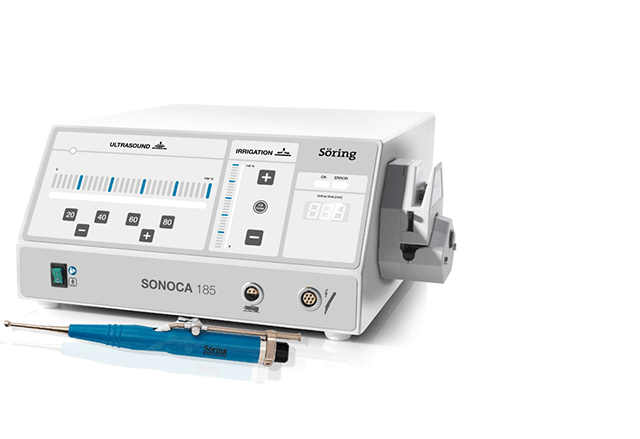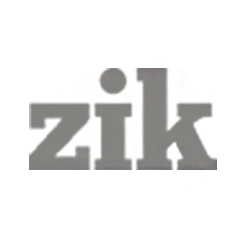We have good news from the doctors at Nodus. The device we delivered to the clinic under the Supporting Rehabilitation Center for Wounded project is in operation and proving its worth in helping doctors treat the wounded.
You may recall about two months ago for Nodus, a dedicated clinic for the neurosurgical rehabilitation of military wounded in the ATO, we, with your help, purchased a machine for the ultrasonic cleaning of wounds. At the time of purchase more than 60 fighters were awaiting treatment procedures using the apparatus. Now doctors are addressing the line of those waiting for treatment using it as much as possible to help as many wounded as possible. Purulent trophic ulcers significantly impede the rehabilitation process, they do not heal, cause a lot of pain and sap a lot of energy from patients. Now doctors have something to rectify this problem. Here are several stories of wounded who have been helped by the device thus far.
The treatment history of 24-year-old Artur is very difficult to detail. However, by bypassing all the gory details of his injury and focusing only on the medical aspect, the patient was transferred to the rehabilitation center for treatment due to the effects of severe traumatic brain injury. His injury is complicated by his vegetative status and a background of critical weight loss (progressive neuropathic cachexia), which has led to distinct trophic skin lesions, especially on contact points with bedding. Pressure ulcers formed in his nasal mucosa due to long-term use of a nasogastric tube, he also has pressure sores in the lumbo-sacral area and in the right femoral it quickly advanced to a point that almost can not be treated and has aggravated suppuration and expansion of the zone of infection. Against the background of weight loss and full immobilization these complex trophic wounds threatened his life and reduced the effectiveness of even the most technologically complex rehabilitation procedures to nothing without the immediate correction and healing of his purulent wounds. By combining a range of ultrasonic cavitation, negative pressure wound treatments with surgical necrosectomy doctors have managed to achieve in the short term and the correct conditions to undertake plastic surgery. The main thing is Artur has begun after sleeping to become more active and began to better respond to rehabilitation classes and procedures. We believe this progress will continue.
Anton, 20, entered the rehabilitation center due to the effects of severe lesions to his arms, right foot, and injury to his right hip including gunshot fractures of the femur, and damaged sciatic nerve. Then these serious injuries have been further complicated by septic arthritis in his hip, osteomyelitis, recurrent phlegmon from his thigh, and multiple fistulas. The patient underwent treatment in various hospitals and medical institutions and endured numerous surgeries, but all have failed to significantly improve his prognosis. By the clinical picture accompanying all of this has been severe contraction of the ankle, knee and hip joints, atrophy of the leg muscles, and pain resistant to treatment. A turning point in his condition never happened. The patient can no longer stand even with walking aids. In this state, at the urging of his relatives, he was transferred from the Institute of Traumatology and Orthopedics to the center for further treatment.
After a few months of an intensive rehabilitation program according to the patient’s individual needs developed and coordinated by Professor Borzykh at the Central Military Hospital, the above contractions were overcome, pain intensity was reduced and regression of the septic arthritis and reduction of the osteomyelitis was achieved. Positive dynamics in the consolidation of the fracture occured and the patient using a external fixation devices was able to stand, then walk at his own pace. However one problem remained – the fistula in the soft tissues in the rumen, which spread in the subcutaneous fat layer over and under aponeurosis and the space around the femur, as evidenced in fistulography examination. Using ultrasonic cavitation for the first time managed to move the fistula, which was immediately reflected in both the thermal reaction and condition of the patient. After a few days the aching pain abated, and a decrease soft tissue swelling was observed. During a fistulography, changes in the subcutaneous fat layer of the aponeurosis and underneath it were observed. The inclusion of the technology to the complex rehabilitation process will now hopefully dramatically accelerate the pace of recovery of the patient.
Oleksandr, 19, volunteered as soon as the war broke out, unable to stay at home and wait for a call-up he volunteered for the Armed Forces. That same day he was to meet his girlfriend to say his goodbyes, but in a terrible twist of fate he was run down on a pedestrian crossing by a drunk driver who fled from the scene and only through witnesses was later found. The severity of his injuries were such that doctors once told his mother to prepare for the worst. In spite of all the pessimism and despondency on the part of the doctors, the boy survived. Although he was in a vegetative state and had numerous wounds, neurological disorders and complications that should have been treated in a hospital, the patient was discharged. His mother remained his sole carer, she organized a functional bed, she set up a food tube, and she treated and dressed his wounds. A mother’s love works wonders and Sasha slowly but surely made small improvements. Through friends his mother learned about Nodus and requested specialists examine her son in their home.
The Nodus doctors did not like what they found and found a way to take Oleksandr to the center. Being aware of all the risks they decided to give the guy the opportunity of undergoing rehabilitation through modern rehabilitation technology. Attention, above all, needed to be paid to the festering trophic wounds and pressure sores in the area of his left hip. Because this situation had continued for more than six months, it was too late to use the standard methods of purulent wounds and bedsores treatment. The was little time to cure the patient of this terrible complication and create the conditions for active and intensive rehabilitation to begin. After using ultrasonic cavitation in the treatment of his wounds, then adding negative pressure wound treatments before again repeating the ultrasound treatment resulted in impressive results. A few days later plastic surgery was conducted on tissue defects. Today his wounds continue to heal. The patient continues to undergo active neurorehabilitation in the belief he will continue to recover and improve!























































